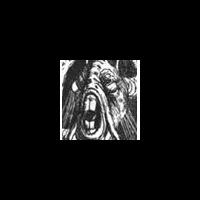how to combine words in Esperanto?
ya paksu, 28 Desemba 2009
Ujumbe: 8
Lugha: English
paksu (Wasifu wa mtumiaji) 28 Desemba 2009 4:57:57 asubuhi
I came across of words that are combined with few words. i just wonder what is the rule of combination of noun.
Do you think a learner is best to remember the vocabulary will be better to master this beautiful language?
For example, diversalandaj, if this is in English, it would be two words. But now it is one word. I am all the time confused and the reading speed will slow down and the spirit of learning is disturbed.
If there is a rule, thus would help me in writing as i am into writing mails to friends in this portal.
Dankon karaj
Gxis la

Oŝo-Jabe (Wasifu wa mtumiaji) 28 Desemba 2009 6:47:08 asubuhi
For example, abelisto and abelbredisto have different amounts of specificity, despite meaning the same thing. In most cases, abel/ist/o is sufficient to get the idea across, but if someone didn't understand what you meant you'd have to resort to the less ambiguous abel/bred/ist/o.
If you want to understand compound words, separate the roots (with ec, ad, etc. added as necessary) and link them in reverse order with prepositions (often "de") or "karakterizita per" So:
dikfingro= "fingro de dikeco"
abelbredisto = "isto pri abelbredado" = "isto pri bredado de abeloj"
abelisto = "isto pri abeloj"
vaporŝipo = "ŝipo karakterizita per vaporo."
Look here and here (if your Esperanto's good enough) to read more about word-building.
paksu (Wasifu wa mtumiaji) 28 Desemba 2009 6:56:16 asubuhi
Oŝo-Jabe:When you build a new world in Esperanto, the roots becomes more strongly linked than with adjectives and nouns. So a 'dika fingro' is a thick finger, but a 'dikfingro' is the finger that is defined by its thickness (=thumb), an idea sufficiently different from the simple 'fingro' to deserve a new word. This process of building a new word is based on the principles of Neceso and Sufiĉo, that is: add all the roots that you need to, but no more than enough to invoke the desired idea.Dankon. Unfortunately, my Esperanto is not above the Ana Pana lesson 4.
For example, abelisto and abelbredisto have different amounts of specificity, despite meaning the same thing. In most cases, abel/ist/o is sufficient to get the idea across, but if someone didn't understand what you meant you'd have to resort to the less ambiguous abel/bred/ist/o.
If you want to understand compound words, separate the roots (with ec, ad, etc. added as necessary) and link them in reverse order with prepositions (often "de") or "karakterizita per" So:
dikfingro= "fingro de dikeco"
abelbredisto = "isto pri abelbredado" = "isto pri bredado de abeloj"
abelisto = "isto pri abeloj"
vaporŝipo = "ŝipo karakterizita per vaporo."
Look here and here (if your Esperanto's good enough) to read more about word-building.
Miland (Wasifu wa mtumiaji) 28 Desemba 2009 10:49:56 asubuhi
paksu:.. what is the rule of combination .. I am confused .. Unfortunately, my Esperanto is not above the Ana Pana lesson 4.You need more experience with the language. I suggest finishing Ana Pana, and also working through the courses Ana Renkontas, Vojaĝu kun Zam and Gerda Malaperis! That way you will see many examples of compound words, and better understand how they are formed. You will also have a good foundation for studying the language further.
paksu (Wasifu wa mtumiaji) 29 Desemba 2009 8:05:35 alasiri
If i have to go through thus far to get it, Esperanto is not the easiest language to learn as it said.


darkweasel (Wasifu wa mtumiaji) 29 Desemba 2009 8:39:16 alasiri
Compounds can be hard to master in the beginning (they weren't for me, but maybe that's because I'm a native German speaker, and German does the same thing as Esperanto here), but once you have some basic vocabulary stock, you'll understand many of them completely naturally.
Just don't give up - Esperanto is still much easier than any natural language you'll ever learn!
Miland (Wasifu wa mtumiaji) 29 Desemba 2009 9:13:44 alasiri
paksu:when i am reading, i could not find the word in the dictionary in lernu ..Could you give me some examples of words that caused you this difficulty, and say exactly where you saw them, if they were in texts forming parts of the lessons in courses on this website?
paksu (Wasifu wa mtumiaji) 30 Desemba 2009 1:24:47 asubuhi
Just don't give up - Esperanto is still much easier than any natural language you'll ever learn!Dankon
